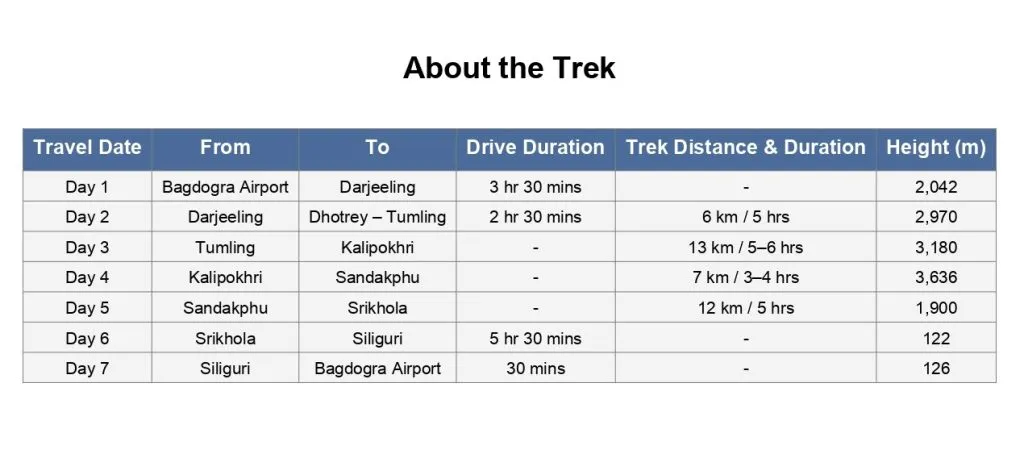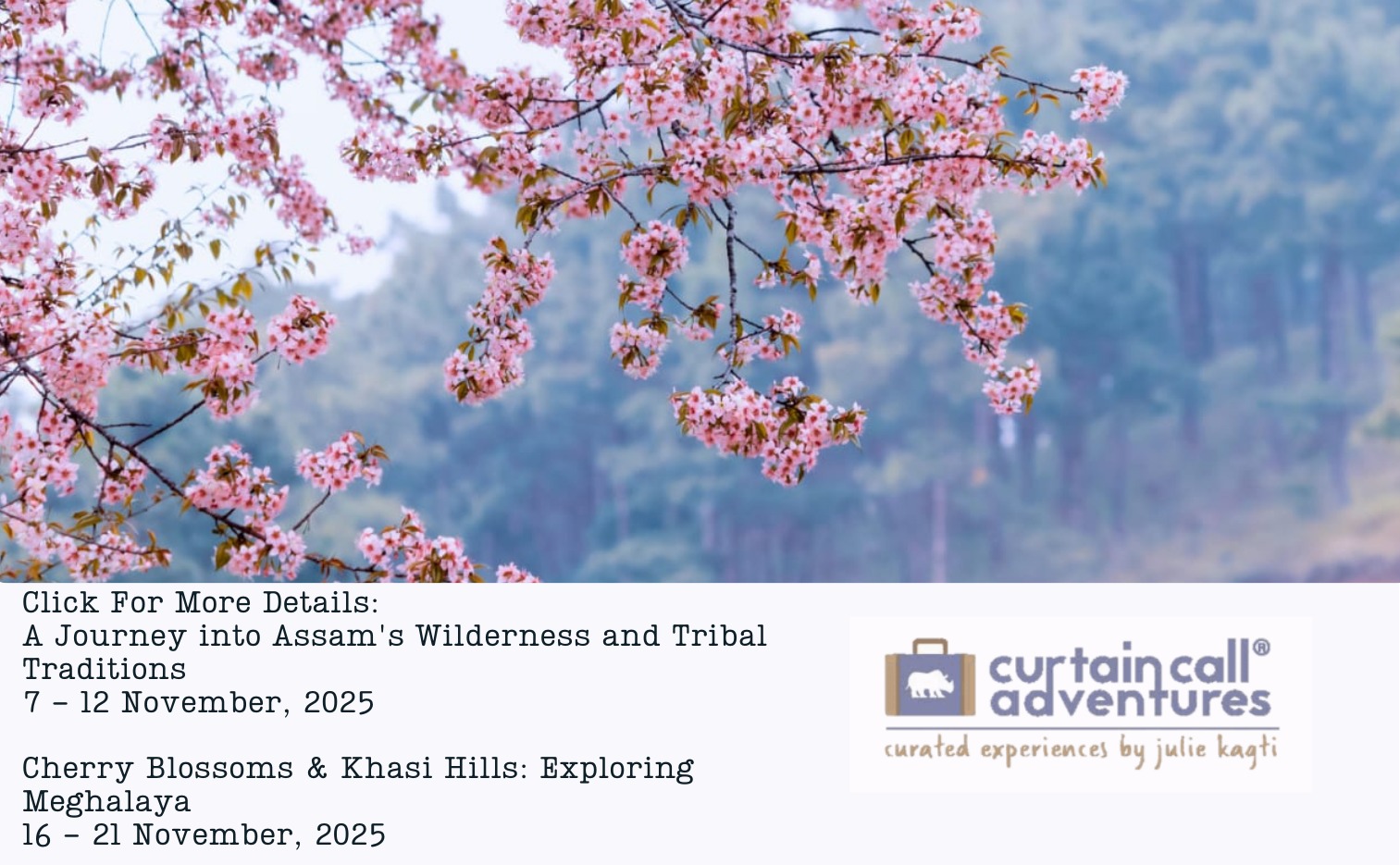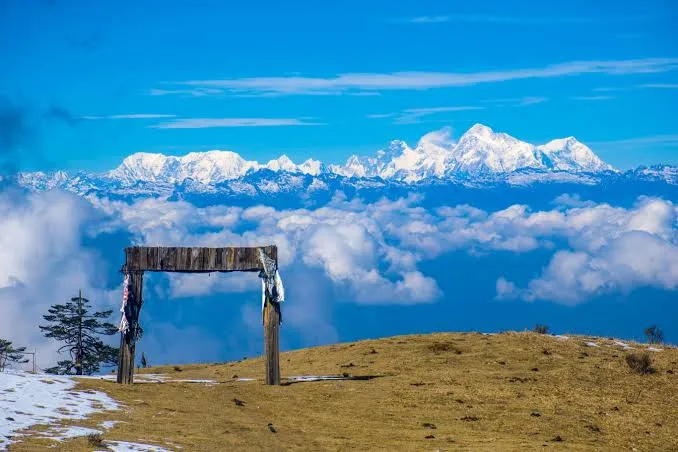
There is a quiet magic in walking slowly, letting the path unfold as it will. On the Sandakphu–Singalila trek, every step feels like a conversation—with the wind, with the forests of rhododendron and pine, with the mountains that rise steadily in the distance. Then one morning, the horizon reveals the great secret you have been walking toward: the Sleeping Buddha, bathed in first light, flanked by Everest, Lhotse, Makalu, and Kanchenjunga—four of the highest peaks on earth, gathered in a single frame. Here, along the gentle undulating trails that trace the border of India and Nepal, you discover that beauty is not in arriving, but in the setting off, the walking on, the letting go.
Trek Highlights of Sandakphu–Singalila
- The Sleeping Buddha
The crown jewel of this trek is the vision of the Kanchenjunga range, lying across the horizon like a giant figure in peaceful repose—head, torso, knees all outlined against the sky. Locals call it the Sleeping Buddha, and when the first light of dawn touches its snowy ridges, it feels like watching the mountains breathe.
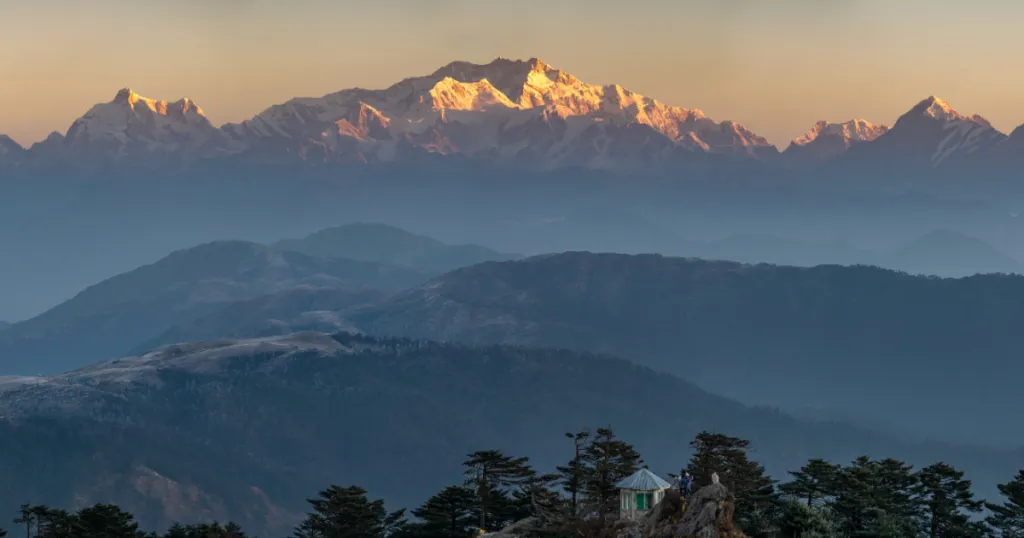
- Four of the World’s Tallest Peaks Together
Nowhere else in India can you see such a majestic line-up—Everest, Lhotse, Makalu, and Kanchenjunga all in one grand sweep. To witness four of the planet’s five highest mountains in a single skyline is both humbling and unforgettable. It is the kind of view that etches itself into memory, long after the trek is over.
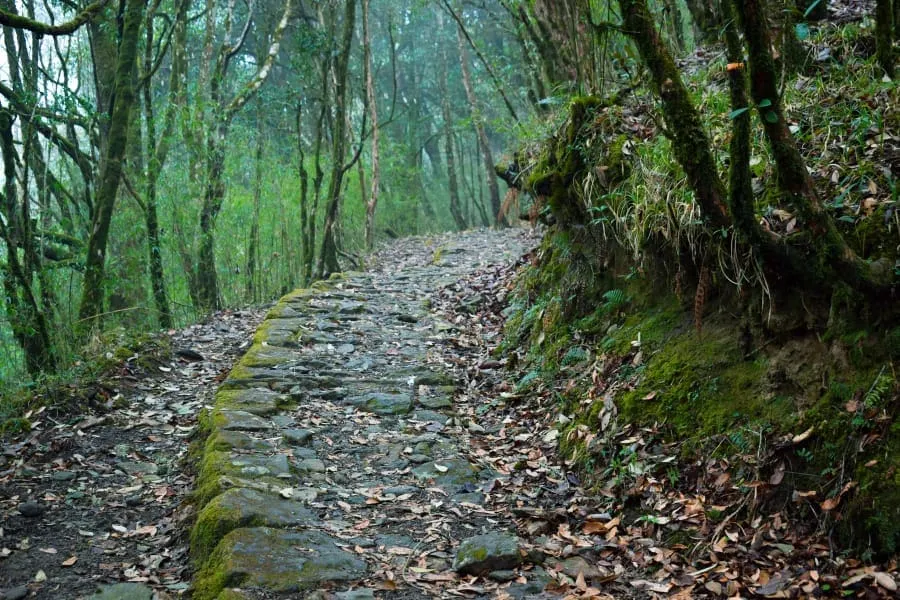
- Singalila National Park
The trek passes through the enchanting Singalila National Park, a sanctuary of rare flora and fauna. In spring, the hills burst alive with rhododendrons, magnolias, and orchids, painting the trail in reds, pinks, and whites. Autumn, on the other hand, brings clear skies and golden-brown hills. If you are lucky, you may even spot the elusive red panda, clouded leopards, or a dazzling variety of Himalayan birds that call this forest home.
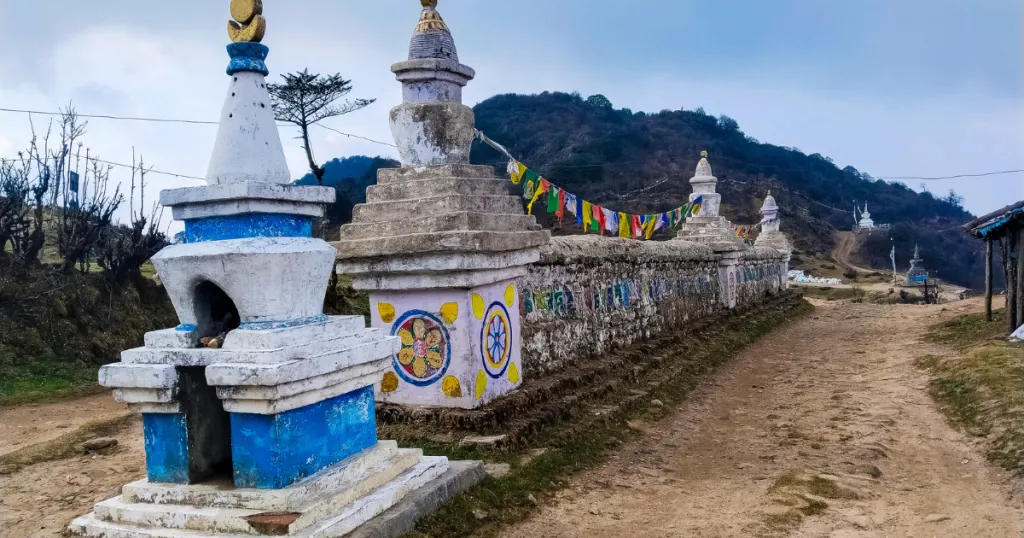
- A Cultural Blend Along the Border
The Sandakphu–Singalila trail is a borderless journey. One moment your steps are in India, the next in Nepal, and the landscape never seems to mind. The tea-houses that line the trail are often family-run, simple yet full of warmth. Sharing a cup of Nepali chai or a plate of steaming momos by a wooden stove becomes as much a highlight as the mountain views.
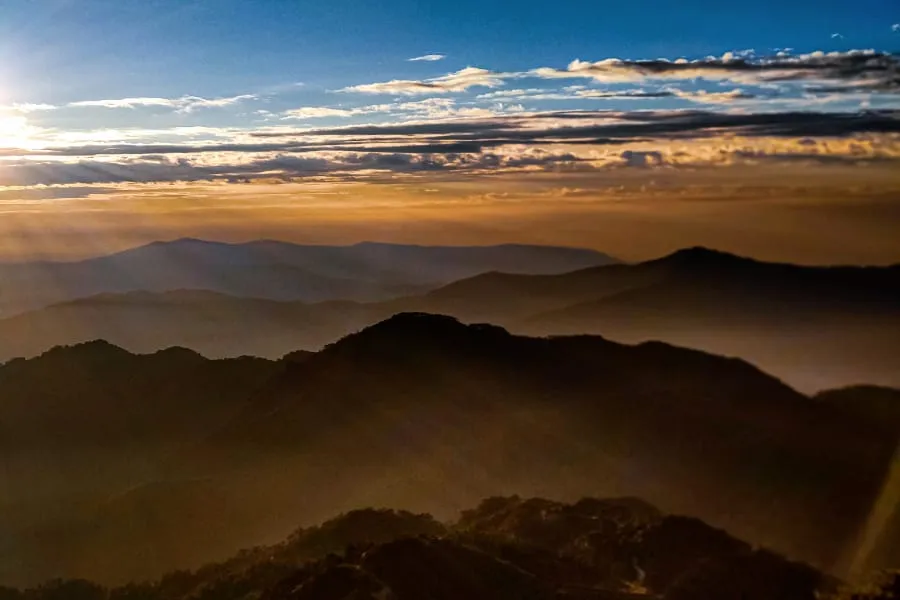
- Sunrise Points that Take Your Breath Away
From Tumling and Tonglu to Sandakphu and Phalut, the trek offers some of the most spectacular sunrise views in the Himalaya. Each dawn feels different—mist curling around valleys, peaks glowing pink, prayer flags dancing in the morning breeze. Standing there, watching the day break over the tallest mountains on earth, is an experience beyond words.
Best Time to Do the Sandakphu–Singalila Trek
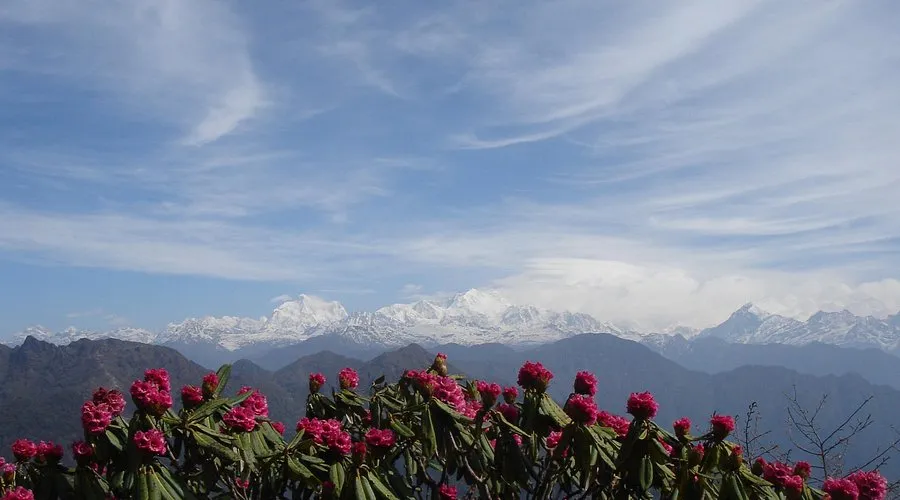
Spring (March – May): A Symphony of Blossoms
Spring is when the Singalila ridge wears its most vibrant colours. The forests along the trail come alive with blooming rhododendrons, magnolias, and wild orchids, turning the trek into a walk through a living painting. The air feels fresh and full of life, and every bend in the path offers a splash of colour against the backdrop of snow-capped peaks. This is also one of the most rewarding seasons for birdwatchers, as the forest hums with the calls and flights of Himalayan species. The weather stays pleasantly cool, making it an ideal time for those who want a balance of nature’s beauty and comfortable trekking conditions.
Autumn (October – November): Clarity and Grandeur
If it’s mountain views you’re chasing, autumn is the season to go. After the monsoon rains have washed the air clean, the skies turn an intense, endless blue, and visibility is at its best. The Sleeping Buddha appears with striking clarity, and the faraway summits of Mount Everest, Lhotse, Makalu, and Kangchenjunga seem almost close enough to touch. The hills take on a golden-brown hue, and the crisp air carries the quiet of the high Himalaya. This is the season most trekkers choose—and for good reason.
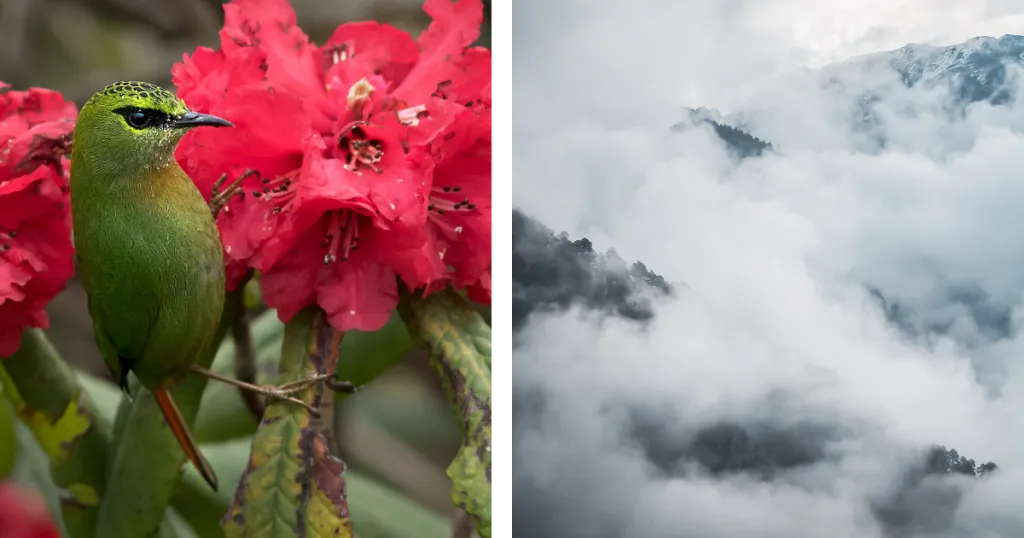
Winter (December – January): A Quiet White Wonderland
For those who love solitude and snow, winter transforms the Sandakphu–Singalila trail into a landscape of hushed beauty. The hills lie under a soft white cover, the forests are still, and the tea-houses feel warmer and more welcoming than ever. The cold can be biting, and conditions are more challenging, but the rewards are immense—clear skies, snow-draped peaks, and a silence that makes the mountains feel even more immense. This season is best suited for trekkers with some experience or those who crave the calm of the off-season.
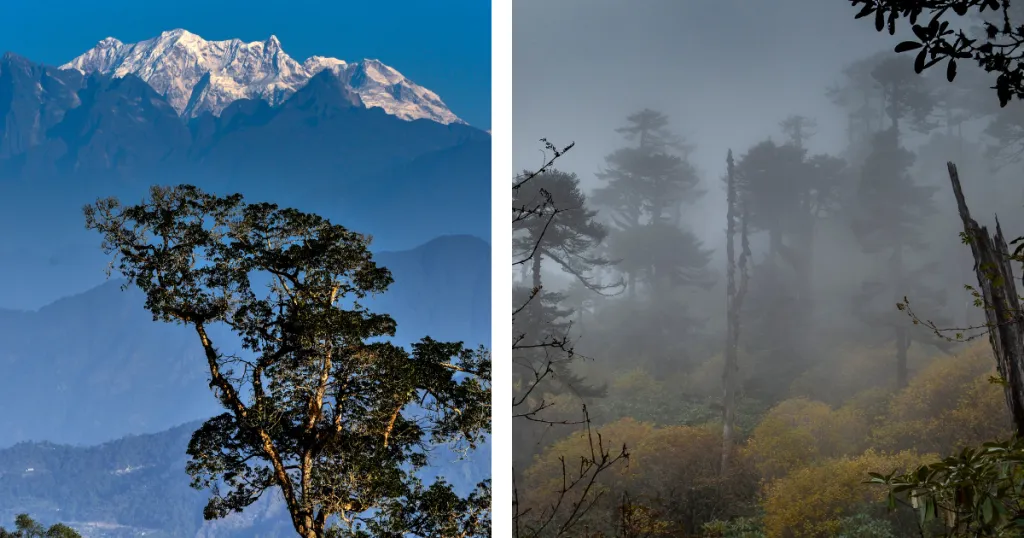
Difficulty Level – Gentle Challenges, Great Rewards
The Sandakphu–Singalila trek is considered moderate, making it one of the more approachable Himalayan journeys. The trail gradually climbs to its highest point at about 11,930 feet (Sandakphu)—a height that rewards you with grand Himalayan views without the strain of extreme altitude.
On most days, you’ll walk for about 5 to 7 hours, covering rolling ridges, forested stretches, and gentle ascents. While it does ask for stamina and a steady pace, it doesn’t demand technical skills or prior high-altitude experience.
This makes the trek an excellent choice for beginners with a reasonable level of fitness, as well as seasoned walkers who prefer a slower, more contemplative journey. If you enjoy long walks, a bit of mountain chill, and the rhythm of the outdoors, you’ll find the Sandakphu trail both welcoming and fulfilling.
Where to Stay – Tea-Houses & Homestays Along the Trail
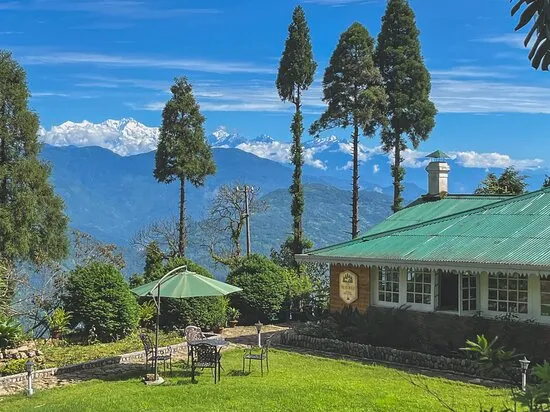
One of the quiet charms of the Sandakphu–Singalila trek is that you don’t need to carry tents or cook under the open sky. Instead, the trail is dotted with tea-houses and family-run homestays, each offering a warm bed, hearty meals, and the kind of hospitality that makes you feel less like a guest and more like a traveller passing through a friend’s home.
Rooms are simple—wooden walls, creaking floors, woollen blankets piled high against the night chill. Meals are equally modest: steaming rice, dal, a curry, perhaps a plate of momos or a hot bowl of thukpa on colder evenings. Yet after hours of walking, these become small feasts.
What stays with you is not luxury but warmth. A crackling stove in the corner, a cup of chai shared with fellow trekkers, a quiet exchange with your hosts about the weather or the mountains. These tea-houses are as much a part of the journey as the trail itself. They turn the trek into an experience of slow living, where comfort is measured not in amenities, but in kindness.
Things to Carry – Essentials for a Thoughtful Trek
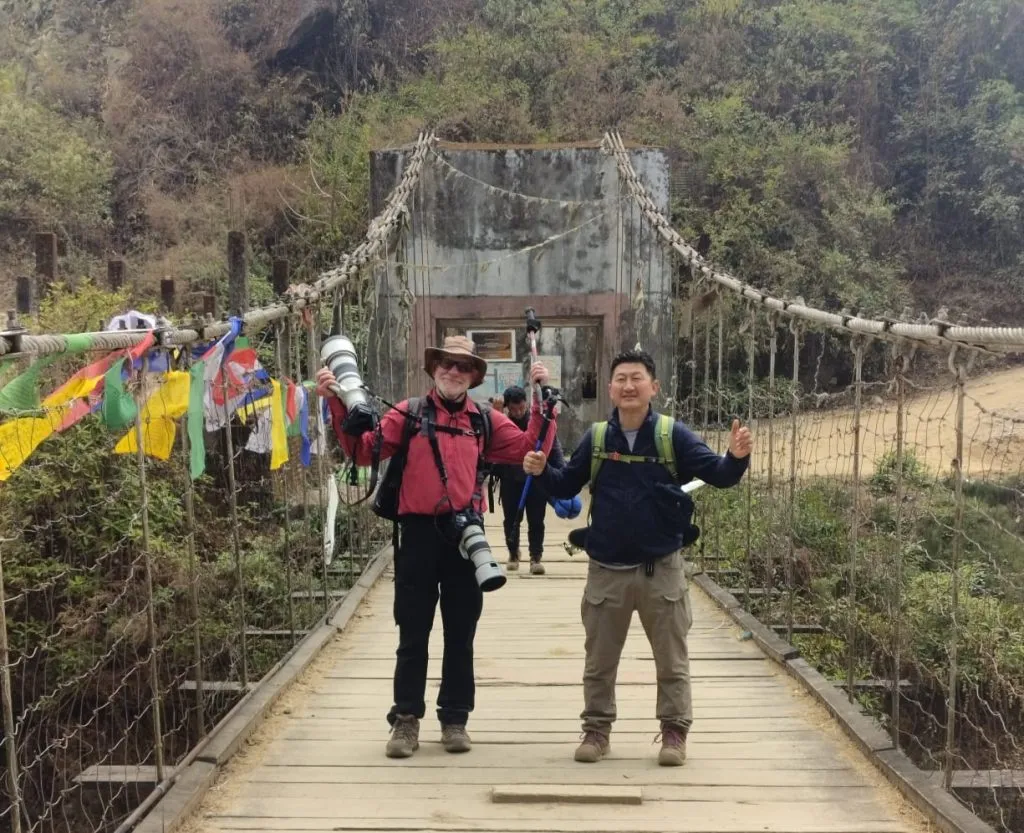
Even a moderate trek like Sandakphu–Singalila asks for a bit of preparation, not in haste, but in mindful attention to what will make each day on the trail comfortable and enjoyable. Layered clothing is essential—the mornings and evenings bring a crisp chill that the sun may not immediately chase away, while the afternoons can be pleasantly warm as you climb through sun-dappled forests.
A good pair of trekking shoes and a walking stick will be your faithful companions, steadying your steps over rocky paths and gentle ascents alike. Bring a water bottle and some light snacks, for the trail is best walked at its own pace, with small pauses to sip, chew, and watch the world move slowly around you.
And of course, a camera—or simply a quiet readiness to capture what your eyes see—is indispensable. The panorama of four 8,000-meter peaks, rhododendron-lined ridges, mist-wrapped forests, and the soft glow of sunrise over the Sleeping Buddha makes this trek a photographer’s paradise. But sometimes, the best images are the ones etched into memory, stored in the quiet corners of your mind.
Responsible Travel – Treading Lightly on the Mountains
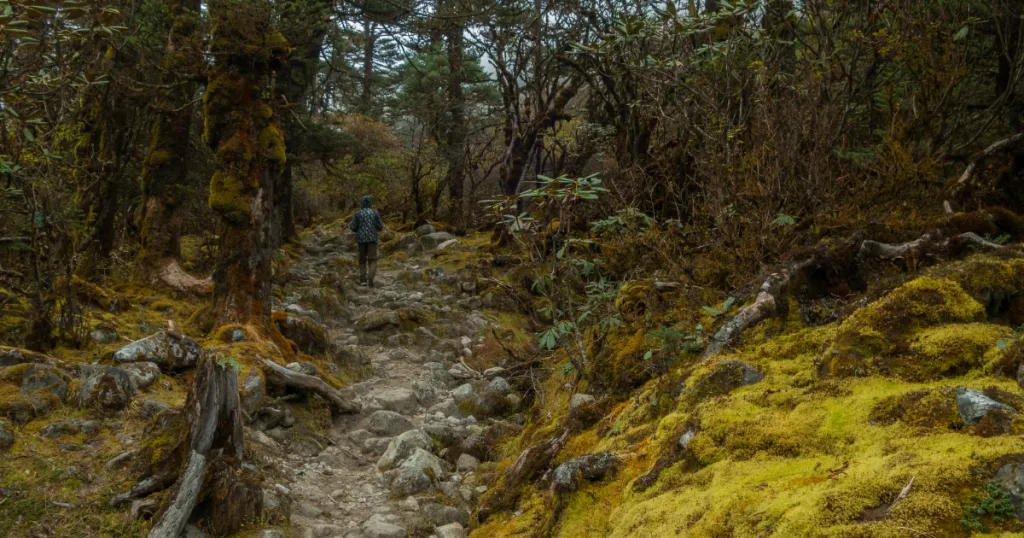
The Singalila ridge is not just a trail—it is a fragile, living ecosystem. Singalila National Park shelters rare flora and fauna, from elusive red pandas to vibrant rhododendrons, and every step we take can leave a mark. Traveling responsibly here means treading lightly: avoid plastic, carry refillable bottles, and leave no trace of your passage.
Equally important is the human side of the journey. The small tea-houses and homestays along the trail are often family-run, sustaining livelihoods and preserving traditions. Supporting local guides, sharing meals, and engaging respectfully with communities is as much a part of the trek as the mountains themselves.
In Sandakphu, responsible travel is not just a rule—it is a gesture of gratitude to the mountains, forests, and people who make this journey possible. Walking slowly, noticing, and honoring both nature and culture ensures that the trail remains as magical for those who come after you.
A Trek That Stays With You
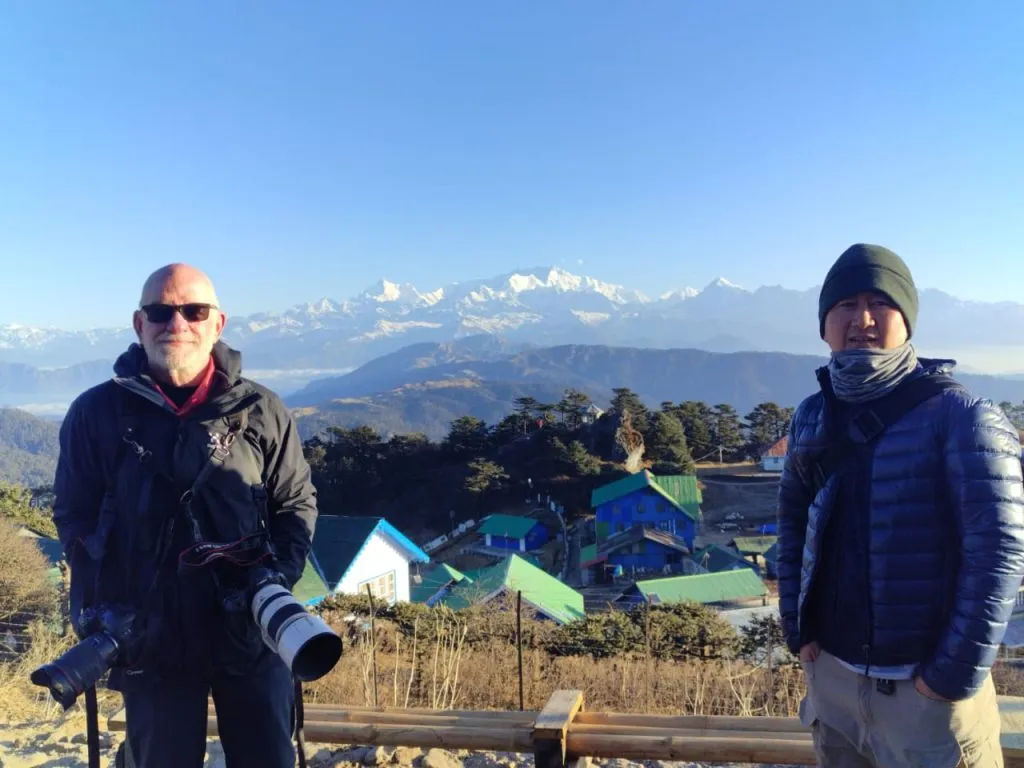
The Sandakphu–Singalila trek lingers long after the last step is taken. It stays in the surreal silence of dawn, when the mountains glow softly and the world feels suspended in quiet wonder. It stays in the warmth of a Nepali tea-house, sipping hot chai after hours of walking, exchanging stories with fellow travelers, and listening to the gentle creak of wooden floors under your tired feet.
It is a journey that teaches patience, invites reflection, and reminds you that the beauty of travel lies not just in reaching a summit but in walking slowly, noticing deeply, and connecting with both nature and people along the way.
Sandakphu–Singalila isn’t just a trek; it’s a window to the world’s highest giants and a gentle reminder of how small yet connected we are to nature.
With this spirit, Curtain Call Adventures will be organising two Sandakphu–Singalila treks in 2026—one in March–April, when the rhododendrons are in full bloom, and another in October–November, when the Himalayan peaks stand in their sharpest, clearest display. Come walk with us, slowly and deeply, into the heart of the Sleeping Buddha’s embrace.
